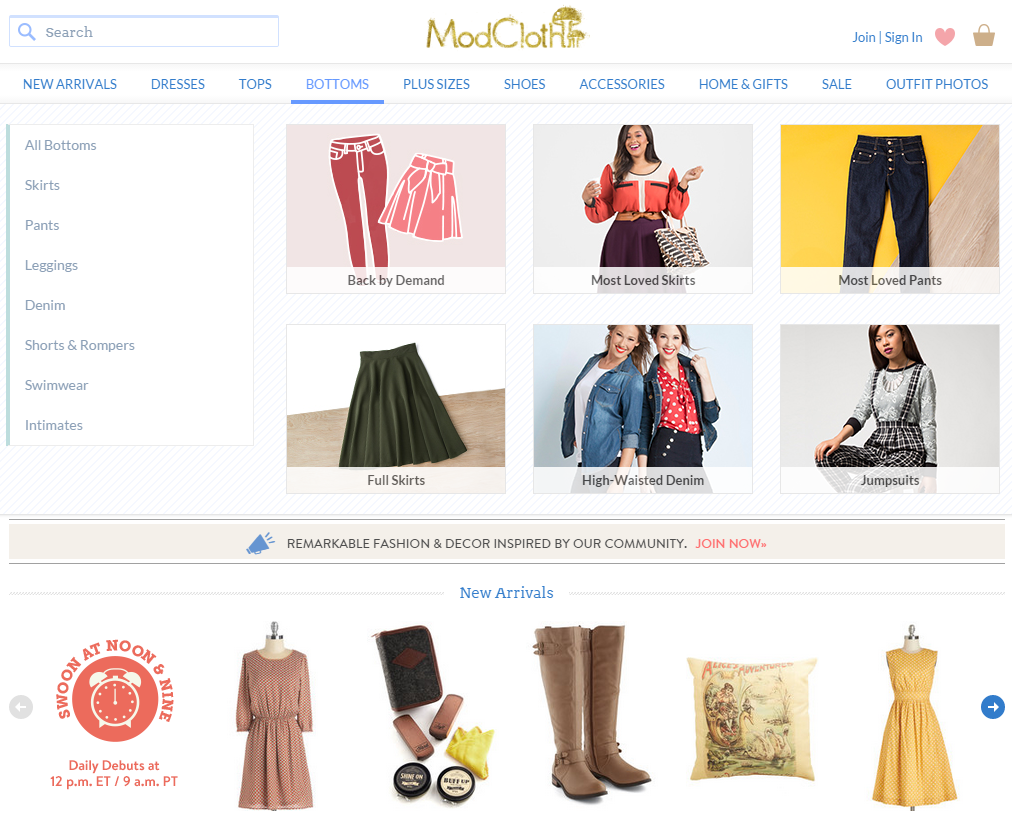The Internet has developed new delivery channels for businesses to better reach customers and generate more sales. Online retail, for example, has come a long way since its inception almost a decade ago and in the process, it has even changed the way people shop. For marketers, the buying behavior of consumers has always been a topic of interest, which is extensively studied and debated over. Despite the debate and arguments, there is no denying that online retail has indeed changed buyers’ behavior.
Consider this: There was a time when retailers could hardly believe that people would buy apparel and fashion accessories online. But today we can see how the percentage of online sales is increasing year on year.
Online apparel consumption has seen a steady growth in the past few years. Cowart, Kelly O. and Ronald E. Goldsmith published an article in 2007 investigating the factors that motivate online apparel consumption. Using Consumer Styles Inventory, the study found that factors like brand consciousness, quality and fashion consciousness, brand loyalty, impulsiveness and hedonistic shopping stimulate online apparel shopping.
How the Internet Changed the Apparel Industry
The rise of the Internet affected the entire retail space, not just the fashion/apparel industry. It reduced the cost of products and at the same time expanded geographical boundaries. Online retail brought buyers and sellers close like never before. By transcending geographic boundaries it allowed companies to even target those consumers who were previously “unreachable.”
The Internet provided a gamut of opportunities for new advanced business models and transactions. It also opened new channels for marketing professionals to better promote their products and services.
Internet Shopping Habits Globally, an online survey conducted by Nielsen Global, found that more than half of the Internet-using population has made at least one online purchase.
The 2014 Pitney Bowes Global Online Shopping Study reveals that cross-border ecommerce is gaining momentum; around 40% consumers have purchased online goods from another country.
And according to Global Perspective on Retail: Online Retailing, the UK, followed by the US and Germany, dominates the online retail market.
The process of online shopping behavior includes five steps:
- The consumer identifies their need for a particular product – apparel in this case.
- She refers to the Internet for more information about the product.
- She compares prices with other competitors to evaluate different alternatives
- She makes a purchase decision where she settles for a product or a brand. This step is followed by the actual purchase.
- The buyer will evaluate the adequacy of the product/brand in terms of her original needs. This influences the future buying behavior and decisions of the person.
If you ask me why a lot of people are into buying apparel online, it is the ease of purchasing that the Internet offers. People can purchase clothing and accessories without leaving the comfort of their house. The power to choose their favorite items at the lowest available prices is another reason why they are ditching offline stores.
But the question now arises: How can companies use this knowledge to their advantage?
Providing Value to Customers
Savvy merchants and retailers understand the importance of providing value to customers. But accomplishing this is even more challenging in the age of hybrid shoppers. Consumers today are increasingly following the trend of “showrooming” where they try clothes on in a traditional brick and mortar store and later order the same item online using their computers or smartphones.
Showrooming is only likely to intensify in the coming days. Thus, online retailers should be able to adapt and intensify their efforts to coddle customers; otherwise competitors are only a click away. Fashion retailers must understand that future consumers will be much more demanding.
The Role of Mobile Devices
The “age of the mobile” has begun. Smartphones and tablets have become embedded into the lives of the consumers as well as retail businesses. In fact, most retail companies are increasingly enabling mobile commerce for shoppers using phones and tablets. Consumer behavior too emphasizes on this transformation as more number of buyers are browsing items and buying them using mobile devices.
The popularity of using mobile devices to order products online is also the reason why showrooming has become such a trend. It provides them with the ease-of-ordering from almost anywhere, even from the physical store itself.
The Popularity of Integrated Commerce
Building a brand through Internet is all about how innovatively and successfully you can address the new, evolving consumer behavior. This is the only way to leverage the changing landscape. For example, the direct-to-consumer model is the new big thing for ecommerce businesses, including the apparel industry. Originally conceived by Bonobos and Warby Parker, this model has gained considerable traction in the world of online retail. At its core, direct-to-consumer is designed to remove any middlemen from the product value chain, thus increasing cost efficiencies. It establishes a direct connection between the manufacturer or service provider and the consumer, allows brands to offer greater value to customers, and also improves process transparency.
Seeing the advantages of direct-to-consumer model, a number of online retail stores are adopting it as their core business process. OwnOnly, an online retailer offering custom-tailored suits and men’s accessories, has seen success over a short period of time using the D2C ecommerce model.
The company, a nascent one compared to established players and luxury brands, is gaining new clientele by providing high quality tailored suits and shirts at relatively affordable prices (two-piece suits starting from $309) by letting customers specify their own measurements, choose materials and define styles and stitches. The company is offering some of the top-line fabrics imported from Italy for their completely customizable suits, and their delivery process takes less than three weeks.
OwnOnly is a very good case study on how bespoke tailoring can become successful and profitable online. They have harnessed the D2C model and shown that it is perfectly suited to the apparel business.
Final Thoughts
Consumers’ buying behavior will keep changing with emerging technology. Online retailers too are finding ways to integrate the newest socio-economic and technological trends to provide better and more personalized ecommerce experiences to consumers. As a result, the bar has been raised in the retail space. Customers are both online and offline, and apparel stores need to focus on both. They need to leverage the dynamic online/offline connection to create a killer brand.







Hi Lori,
Great article. You might also want to look at this study that outlines some of the causal factors.
http://www2.warwick.ac.uk/fac/cross_fac/iatl/reinvention/issues/volume5issue1/kramer/
Glad you liked the article, Manish! This study looks interesting, let me check it out… Thanks!
Hello, Lori. Really liked your article.
How will brick and mortar stores react when they find they are being used as a changing room or a trial room, but purchases are going elsewhere. What are their choices? Can they compete with e stores